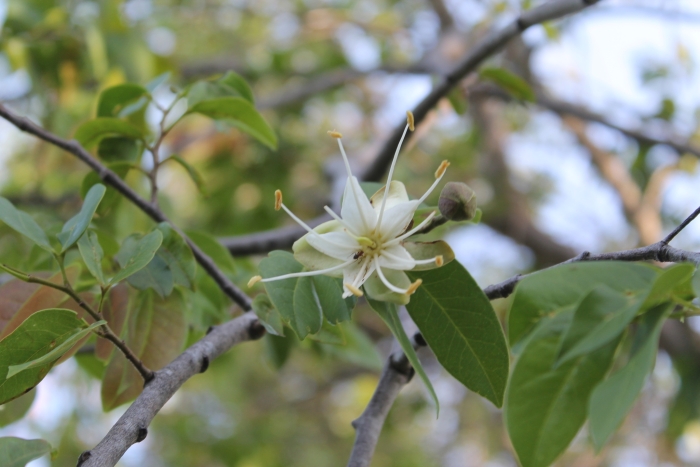West Indian Locust
(Hymenaea courbaril)
West Indian Locust (Hymenaea courbaril)
/
/

Viacheslav Shalisko
CC BY 4.0

























Estimated Native Range
Summary
West Indian locust is valued for its hard, durable wood, which is used in high-end furniture and flooring. The sweet, edible pulp of its fruit pods is used in various culinary applications despite its peculiar odor. The tree’s resin, known as animé, is utilized in incense and varnish. In cultivation, it is often used as a shade tree or ornamental specimen due to its impressive size and canopy. It requires well-drained soils, moderate water, and thrives in full sun to partial shade conditions. While the wood is exceptionally hard, measuring 2,350 lbf on the Janka scale, it is also known for its resistance to termites and decay, making it ideal for heavy construction and decorative purposes. However, the tree’s large size and slow growth rate should be considered when planting in urban or residential settings.CC BY-SA 4.0
Plant Description
- Plant Type: Tree
- Height: 16-65 feet
- Width: 2-5 feet
- Growth Rate: Slow, Moderate
- Flower Color: White, Yellow
- Flowering Season: Summer
- Leaf Retention: Evergreen, Semi-deciduous
Growth Requirements
- Sun: Full Sun
- Water: Medium
- Drainage: Fast
Common Uses
Bee Garden, Bird Garden, Edible*Disclaimer: Easyscape's listed plant edibility is for informational use. Always verify the safety and proper identification of any plant before consumption., Low Maintenance
Natural Habitat
native to tropical rainforests and seasonally dry forests in Mexico, the Caribbean, Central America, and South America
Other Names
Common Names: Jatoba, Courbaril, Brazilian Copal, Carapa, South American-Locust, West Indian-Locust, Amami-Gum, Brazilian Cherry
Scientific Names: , Hymenaea courbaril, Courbaril hymenaea, Hymenaea animifera, Hymenaea candolleana, Hymenaea confertifolia, Hymenaea courbarii var. stilbocarpa, Hymenaea courbaril var. courbaril, Hymenaea courbaril var. obtusifolia, Hymenaea courbaril var. stilbocarpa
GBIF Accepted Name: